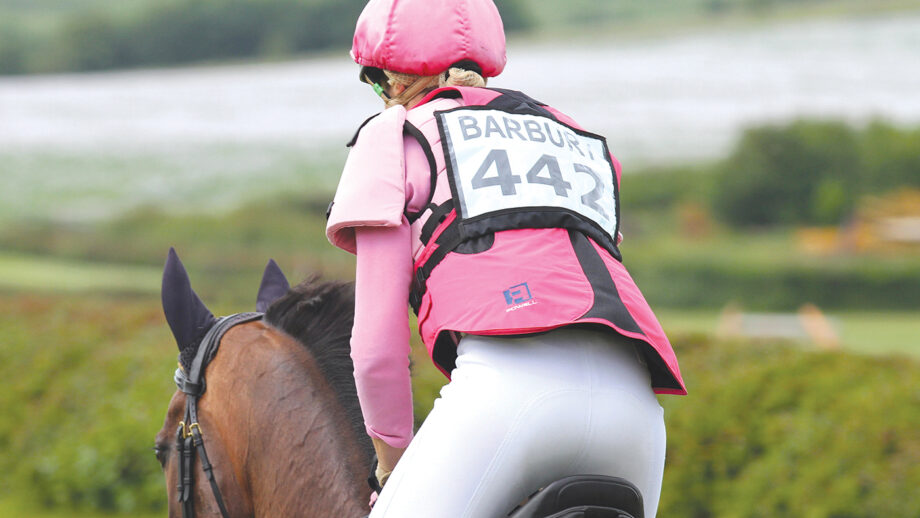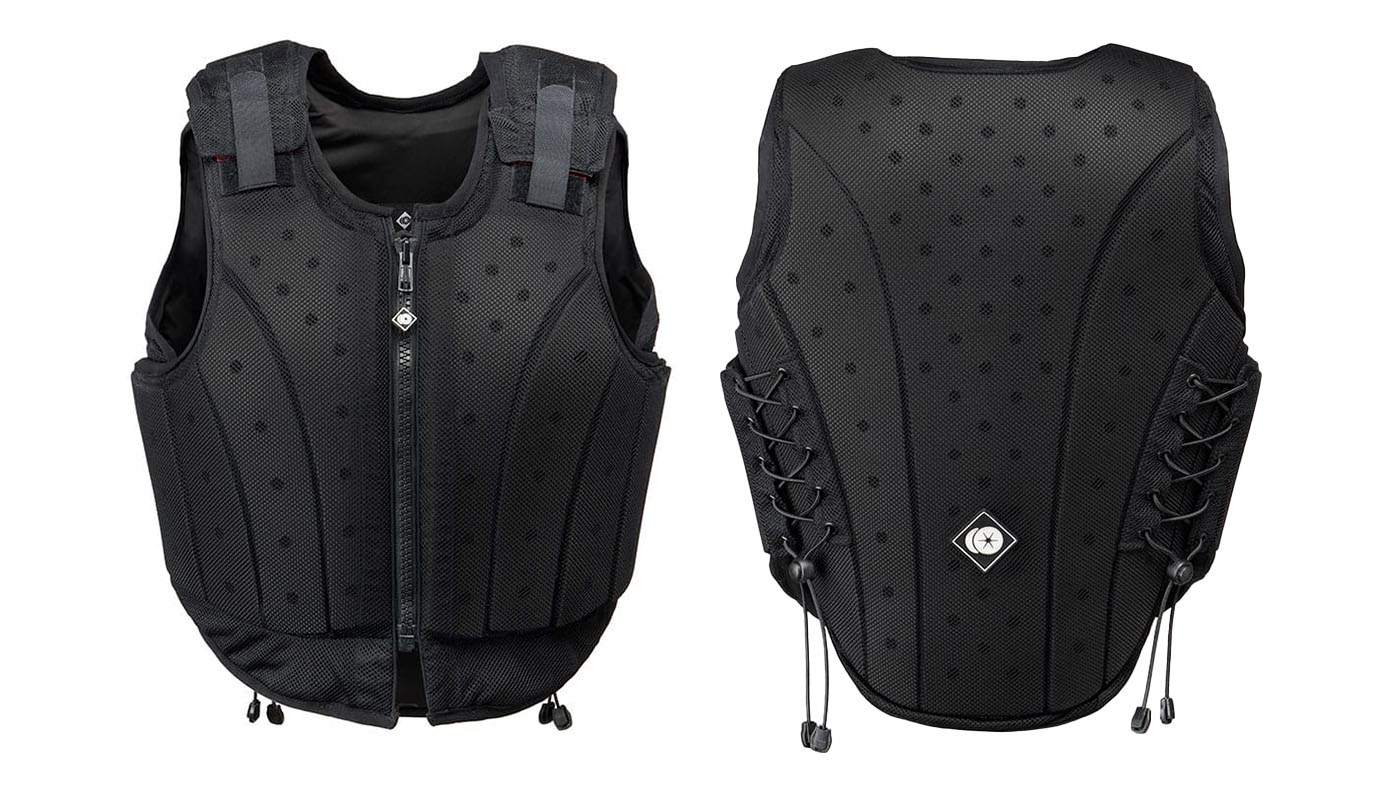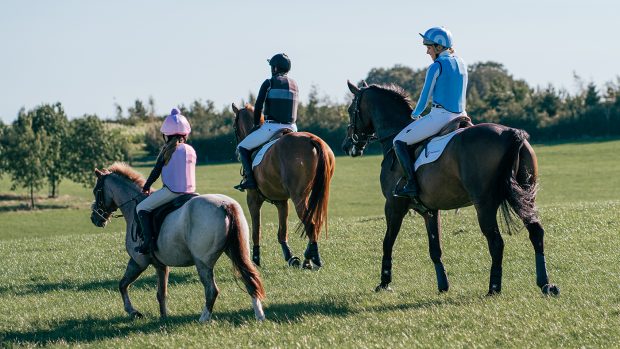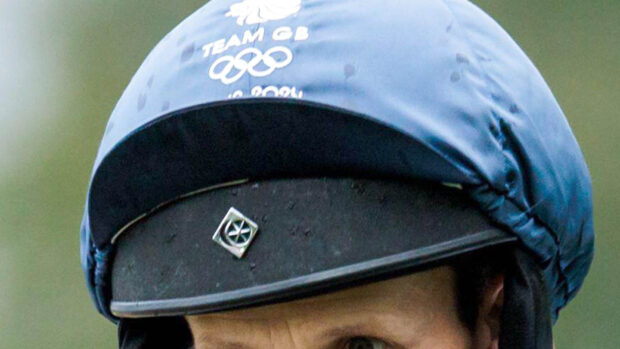If you’re shopping for rider safety gear, you might have come across two similar-sounding options: body protector and back protector. While they might seem quite similar at first glance, they’re designed for different purposes. So, what’s the difference, and which one do you actually need?
Here’s everything you need to know to make the right choice for your riding when it comes to choosing between the best body protectors and best back protectors.
Body protector vs back protector: What’s the difference?
A body protector is the more robust of the two. Designed to safeguard your entire torso, it covers your back, chest, ribs and internal organs in the event of a fall or kick. These padded vests are usually made from layers of shock-absorbing foam, and their design varies from flexible and lightweight to more rigid depending on the level of protection.
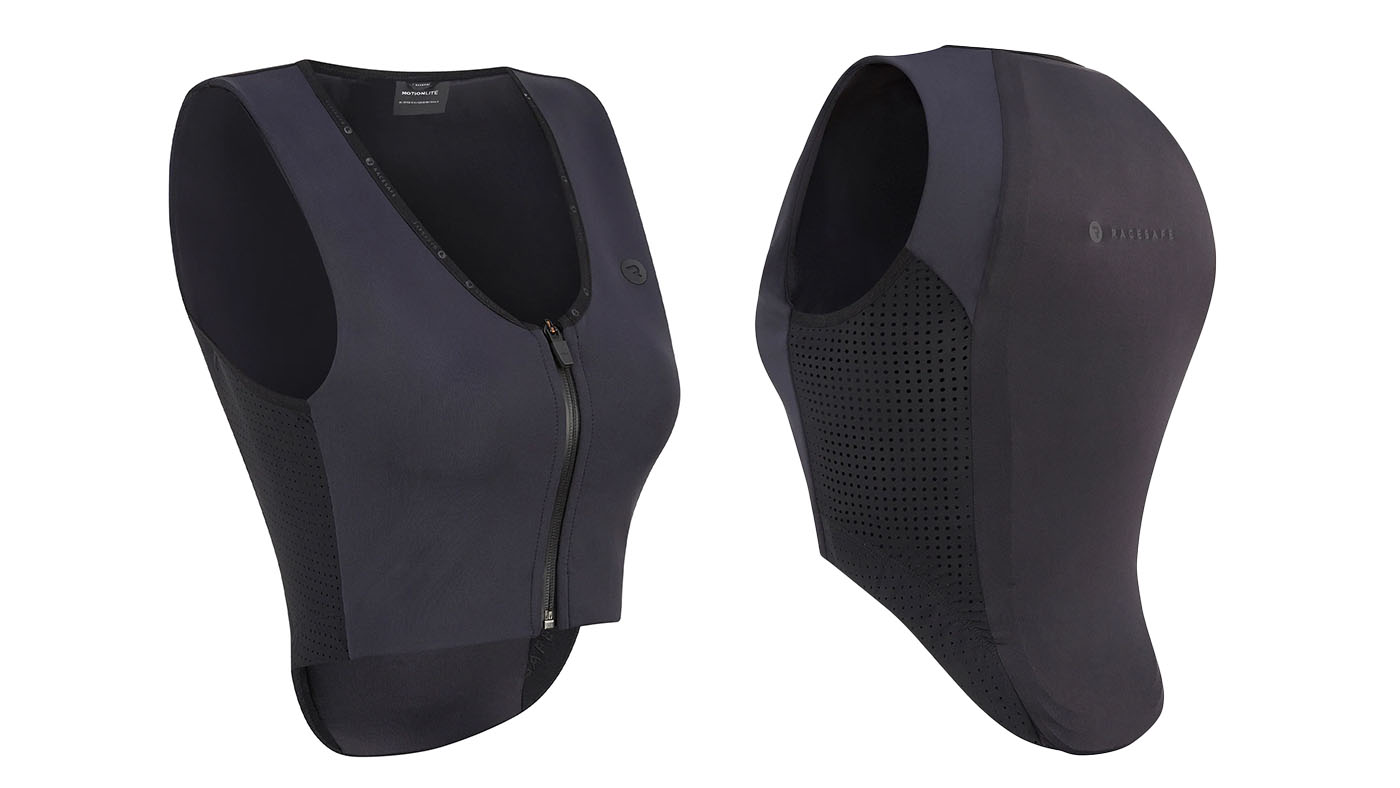 A back protector, by contrast, does exactly what it says – it protects your spine and lower back, and nothing more. These are generally thinner, lighter and more comfortable, but don’t offer the same level of overall coverage. They’re ideal for riders who want a bit of extra peace of mind during flatter work or hacking, but they’re not designed for high-risk disciplines.
A back protector, by contrast, does exactly what it says – it protects your spine and lower back, and nothing more. These are generally thinner, lighter and more comfortable, but don’t offer the same level of overall coverage. They’re ideal for riders who want a bit of extra peace of mind during flatter work or hacking, but they’re not designed for high-risk disciplines.
Which should you wear – and when?
The simple answer is: it depends on what you’re doing.
Body protectors are best suited to riskier activities such as:
- Cross-country (and are mandatory in British Eventing for the cross-country phase, and over solid fences in arena eventing)
- Jumping young or unpredictable horses
- Backing horses
- Schooling in more unpredictable environments
From 1 January 2024, most major governing bodies will only accept body protectors that meet the latest BETA Level 3 (2018) standard.
You can spot BETA Level 3 (2018) approved body protectors by their blue label. If your sport’s governing body – such as The Pony Club, British Eventing, British Riding Clubs, or BSPS – requires a body protector, this is the version you’ll need.

Body protectors with green, orange, or the older purple (2009) labels aren’t accepted by most governing bodies. While you can still wear them for unaffiliated riding or in disciplines like British Dressage or British Showjumping – where body protectors are optional – it’s recommended to replace them every three to five years.
For full peace of mind, the BETA Level 3 (2018) standard offers the highest level of protection currently available. All of the body protectors we’ve featured in our guides to the best body protectors and best body protectors for children meet this standard and are accepted by all major organisations.
Back protectors are a good choice for:
- Hacking
- Schooling on the flat
- Riders who don’t like the feel of a full-body protector but still want a bit of spinal protection
Pros and cons
Here’s a quick overview:
Body protectors:
✔ Greater protection for ribs, back and internal organs
✔ Required for some disciplines (e.g. British Eventing cross-country)
✔ Can be worn with an air jacket for maximum protection
✖ Can feel bulky or hot, especially in summer
✖ Some riders find them restrictive at first
Back protectors:
✔ Lightweight and comfortable, easier for everyday wear
✔ Tend to be cheaper because they involve less material
✔ Provide essential protection whilst keeping freedom of movement
✖ Limited protection – less suitable for jumping or higher-risk riding
✖ Doesn’t meet competition requirements for some disciplines
Body protector vs back protector: How to choose
Start by considering what kind of riding you usually do. If you’re mostly hacking or doing flatwork, a back protector may be sufficient. But if you’re jumping, eventing or working with unpredictable horses, a body protector is likely to be the safer choice.
Next, think about fit. A well-fitted protector – whether full body or back-only – should feel snug but not restrictive. It shouldn’t shift or ride up when you’re in the saddle. Many tack shops offer professional fitting services, and it’s worth taking advantage of this: a poorly fitted protector can’t do its job properly.
We recommend having your body protector or back protector fitted by a BETA-trained retailer.
Comfort matters, too. Try mounting and moving around while trying it on – can you lift your arms, sit comfortably, and would you be able to dismount easily? If not, try a different size or model. Some riders also choose to pair a body protector with one of the best air jackets for added protection.
There’s no one-size-fits-all solution, but wearing the right safety gear – every time you ride – is one of the most effective ways to reduce your risk of injury.
If you’re unsure, speak to your local BETA-trained retailer or a competition organiser. They can help you ensure your kit is safe, compliant, and suitable for your discipline.
- To stay up to date with all the breaking news from major shows throughout 2025, subscribe to the Horse & Hound website
You may also be interested in:

10 body protectors that meet the current standards

6 back protectors that offer extra protection for everyday riding

Best air jackets for the ultimate protection, comfort and performance – options to suit every rider

12 body protectors for children that are up to Pony Club and riding school standards

Subscribe to Horse & Hound magazine today – and enjoy unlimited website access all year round

